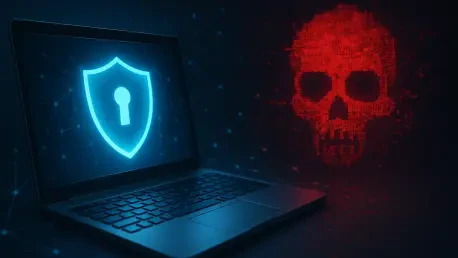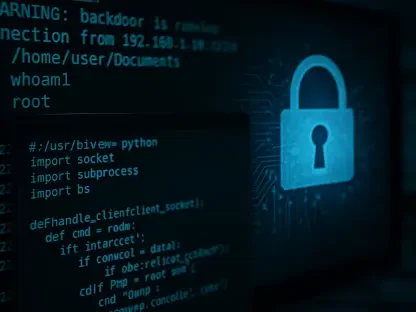In an era where digital connectivity underpins nearly every aspect of daily life—from financial transactions to critical infrastructure management—the importance of robust cybersecurity cannot be overstated. As reliance on networked systems deepens, so too does exposure to an array of sophisticated cyber threats that jeopardize personal privacy, organizational stability, and even national security. Unlike physical dangers such as fire, which humanity has tamed through centuries of regulation and instinctive response, cyber risks remain elusive and intangible, often slipping under the radar until disaster strikes. This lack of visibility fosters a dangerous complacency, leaving significant gaps in defenses despite the increasing frequency and severity of breaches. The persistent struggle to address these vulnerabilities raises critical questions about the intersection of technology, human behavior, and strategic planning. Addressing this complex landscape demands not just advanced tools but a fundamental shift in how digital risks are perceived and prioritized across all levels of society.
Unseen Dangers in a Digital World
The inherent challenge of cybersecurity lies in its abstract nature, a stark contrast to physical threats that trigger immediate human response. Consider fire: its danger is palpable through sight, smell, and heat, prompting swift action backed by well-established safety protocols and societal norms. A cyber threat, however, offers no such sensory warning. Malicious code or a data breach operates silently, often undetected until the damage—be it financial ruin or compromised sensitive information—becomes evident. This invisibility contributes to a pervasive underestimation of digital risks, as individuals and organizations fail to grasp the potential impact until it’s too late. Without the visceral cues that drive urgency, the development of comparable safeguards, like universal cybersecurity standards or ingrained protective habits, remains inconsistent. Overcoming this perceptual barrier is a foundational step toward cultivating a mindset that treats digital threats with the gravity they warrant.
Compounding this issue is the absence of a unified framework to manage cyber risks on a global scale. While fire safety benefits from standardized codes, regular drills, and public education, cybersecurity often operates in a fragmented manner, with varying levels of preparedness across sectors and regions. Many entities still view digital protection as a secondary concern, allocating resources only after a breach exposes their vulnerabilities. This reactive approach starkly contrasts with the proactive measures seen in managing tangible hazards. Historical lessons from mastering physical dangers suggest that embedding cybersecurity into cultural and institutional priorities could mirror the success of fire prevention strategies. Elevating awareness and establishing consistent regulations would help transform an often-ignored risk into a forefront issue, ensuring that defenses evolve in tandem with the threats they aim to mitigate.
The Rise of Sophisticated Cyber Attacks
The cyber threat landscape is undergoing rapid transformation, with adversaries deploying increasingly cunning methods to evade detection. A prime example is the use of hidden text salting in malicious emails, where attackers manipulate cascading style sheets (CSS) properties to conceal harmful content from spam filters and advanced detection systems. This tactic, widely documented by cybersecurity researchers, poses a significant challenge to even the most cutting-edge machine learning algorithms designed to identify threats. The subtlety of such techniques allows malicious payloads to slip through initial defenses, reaching unsuspecting users with devastating consequences. Countering this requires innovative approaches to filtering and detection, ensuring that hidden elements are identified and neutralized before they can inflict harm. As attackers refine their methods, staying ahead demands constant vigilance and adaptation from security professionals.
Equally concerning is the trend of exploiting legitimate tools for illicit purposes, blurring the lines between trusted software and malicious intent. A notable case involves ransomware operators leveraging Velociraptor, an open-source forensics platform, to carry out attacks. This shift toward weaponizing familiar systems underscores a broader move to stealth and deception, making it harder for conventional security measures to distinguish friend from foe. Such tactics exploit the inherent trust placed in established tools, turning strengths into vulnerabilities. Addressing this evolving challenge necessitates a rethinking of how software integrity is verified and monitored, alongside the development of more dynamic threat intelligence capabilities. As cybercriminals continue to innovate, the cybersecurity community must prioritize agility, ensuring that defenses are not only robust but also flexible enough to anticipate and disrupt these sophisticated attack vectors.
Navigating Broader Trends and Future Risks
Beyond specific attack methods, several overarching trends are reshaping the cybersecurity domain, presenting both opportunities and uncertainties. One significant development is the advancement in quantum error correction, a breakthrough acknowledged by prestigious awards in the field of physics. While this innovation holds promise for enhancing computational power, it also raises alarms about the potential obsolescence of current encryption standards. If realized at scale, quantum capabilities could render many existing security protocols ineffective, necessitating a complete overhaul of digital protection mechanisms. Preparing for this eventuality involves not only technical research but also international collaboration to establish new cryptographic standards. Balancing the excitement of such progress with the risks it introduces remains a critical task for policymakers and technologists alike.
Meanwhile, policy decisions are creating immediate ripples in the cybersecurity landscape, often with concerning implications. The recent move by the U.S. government to discontinue funding for the Multi-State Information Sharing and Analysis Center (MS-ISAC) has sparked worries about diminished collaborative defense at state and local levels. This reduction in support could leave smaller jurisdictions more vulnerable to attacks, widening the gap in national security readiness. Simultaneously, the human element of cybersecurity cannot be overlooked, as the strain on defenders grows evident. Burnout among professionals, highlighted during initiatives like Cybersecurity Awareness Month, points to the urgent need for workplace well-being programs alongside technical solutions. A fatigued workforce is less equipped to handle relentless threats, emphasizing that sustainable defense strategies must prioritize human resilience as much as system fortifications.
Building a Resilient Digital Future
Reflecting on the multifaceted challenges discussed, it’s clear that past efforts to secure the digital realm faced persistent hurdles due to the intangible nature of cyber threats and the rapid evolution of attack methods. Historical breaches often stemmed from a lack of proactive prioritization, leaving organizations scrambling to respond after the fact. The sophisticated tactics employed by adversaries, from hidden text in emails to the misuse of trusted tools, tested the limits of existing defenses time and again. Broader shifts, such as funding cuts to collaborative security initiatives, further strained resources, while the looming impact of quantum advancements signaled even greater challenges on the horizon.
Moving forward, actionable steps emerged as vital to strengthening cybersecurity. Investing in advanced detection technologies to counter stealthy attacks proved essential, as did fostering international cooperation to develop encryption resilient to future disruptions. Supporting the well-being of cybersecurity professionals through structured programs became a priority to maintain a capable defense force. Additionally, advocating for sustained policy support at all governmental levels ensured that collaborative frameworks remained robust. These measures, grounded in lessons from past struggles, paved the way for a more secure digital environment, addressing both immediate threats and long-term uncertainties with equal resolve.









